How we made The Mind Of Herbert Clunkerdunk Series 2
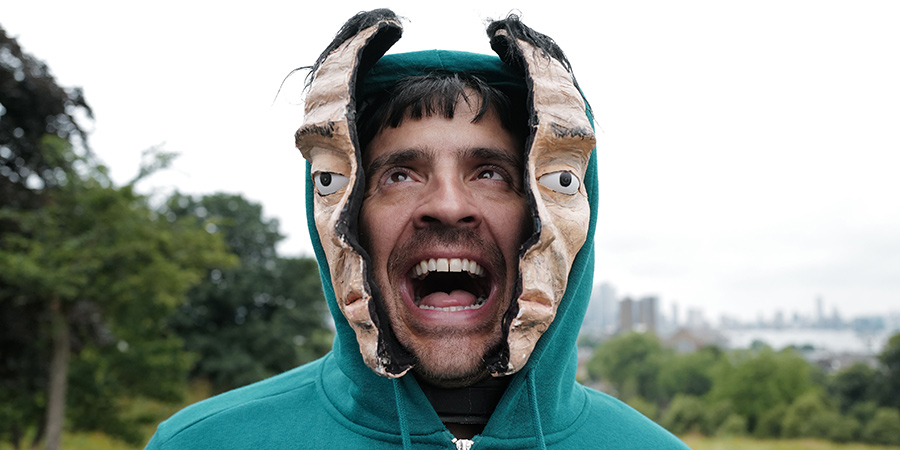
Multiple Bafta and Edinburgh Comedy Award-nominee Spencer Jones (Mister Winner, Upstart Crow) returns as his alter ego in BBC Two's The Mind Of Herbert Clunkerdunk. In Series 2, everything's "bigger, weirder and dafter", and Herbert's still no closer to getting his work, family or his imagination under control. Every miniscule flight of fancy that dances through Herbert's brain can - and does - lead to inanimate objects coming to life, music videos springing out of nowhere, and a doorstop from Memphis called Mr Twanger. Quite a challenge to bring to the screen!
Here we talk to producer Ben Worsfield and director Martin Stirling to find out how they made the five new episodes...
Herbert's back! Tell us what we can expect from the new series.
Ben: There was an ambition to make Series 2 larger in scale - to get Herbert and his family out and about a bit more, visit some unusual locations, add some extra characters etc. So in this series we muck around with green screen on a moving train, we go to an underwater dystopia, a mechanics' yard that turns into a Western, he casts a fishing rod so hard it flies all the way around the world... normal stuff like that.
Martin: Something to expect is a lot more music videos, cameras in questionable places and a disgustingly brilliant cast. Joining the regulars of Bobby (Lucy Pearman), Junior and Woman Child (Sonny and Winona Jones, Spencer's real kids), Delivery Chris (Kit Sullivan) and Jonny Wallop (Dominic Coleman) we have the versatile and loveable Shiloh Coke playing a legendary mechanic, an outstanding turn by Felicity Ward as "Denim Jean" (Bobby's annoying friend from uni), Jordan Gray is an archaeologist from the future, the inimitable Will Seaward plays a Jolly Goth who you just can't say no to, Amy Booth-Steel plays a fearsome casting director, Shalini Peiris appears as a singing dentist, Marlon Davis shines as a window cleaner and Sarah Twomey is a commuter with a twist, Lipstick Linda. Oh yeah, and Vic Reeves. He does a bit. So that's nice.
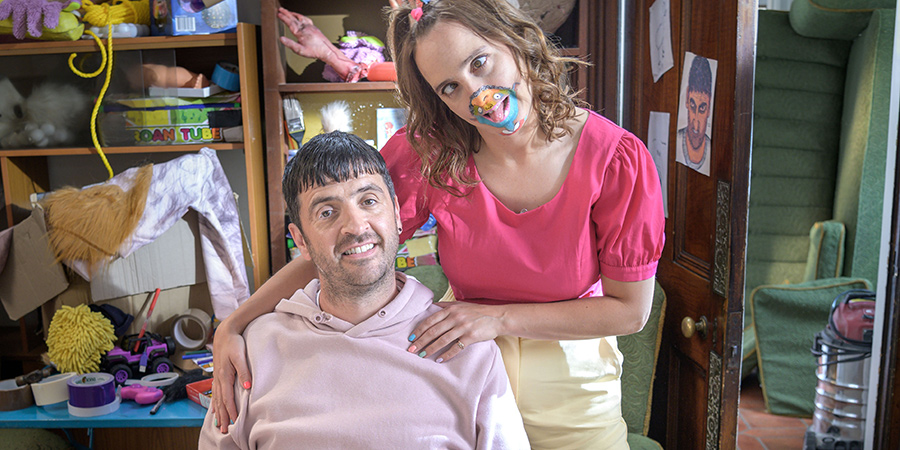
What was the casting process like for the new characters?
Ben: It was a bit of a challenge as we didn't have a casting director. I love working with casting directors and think what they do is a proper piece of magic, it's such a highly skilled job - but like a lot of things in this series, casting was a bit of a luxury and we needed to save every penny. This series has a real home-made, 'we're all in it together' vibe, so Martin, Spencer and myself rolled our sleeves up, and with the help of David Simpson, the exec producer who also produced Series 1, we made lists of people we liked and started asking them to audition.
Something I loved about Series 1 is there were some unexpected choices in the casting. Not only do Spencer's real children Sonny and Winona play his kids in the show, there's also some really creative thinking when it comes to casting actors who might surprise you in these weird and wonderful roles. There are so many brilliant comic actors out there, but you sometimes start to see the same faces crop up in lots of shows. We wanted to cast the net wide for Series 2, to find some newer names but also cast some of our favourite actors in roles that would allow them to do something a bit surprising and different.
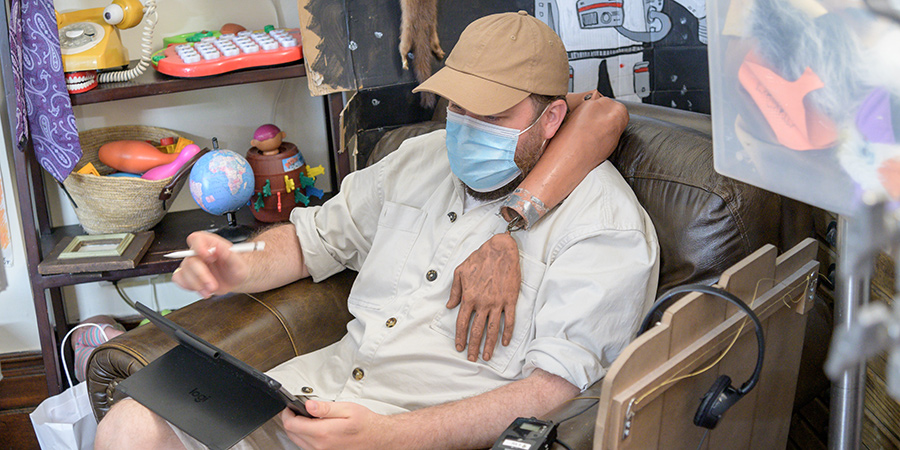
Martin: I absolutely love casting but the process is a real funky one for Clunkerdunk (without the added annoyance of doing it over zoom due to covid!). It's tough for the actors to get a sense of flow when you're asking them to imagine an abrupt change in speed or direction in the scene "oh this is the bit where everyone is suddenly wearing denim and dancing to some sassy electro swing".
Clunkerdunk is a show where some jokes rely on executions across multiple departments so reading a script for an audition almost doesn't make sense without the puppets/costume changes/VFX/split screens/etc to bounce off. It's hard to get the flow you would establish in any normal show... but this isn't a normal show by a long stretch. One of my favourite parts of this series is that we get to meet some other Clunkerdunks (very briefly) where Spencer's real brother Adam makes an appearance as Herbert's brother and mum. He looks similar enough to Spence that for a split second it skews your brain and then it's gone.
What was it like working with Spencer and the rest of the cast?
Ben: We were incredibly lucky to work with brilliant actors across the board, and Spencer really sets the standard for everyone. Obviously there's our regular characters from Series 1 - Bobby Kindle and Jonny Wallop, played by Lucy Pearman and Dominic Coleman, who are both incredibly funny, inventive actors with the added advantage of 'getting' the show, having been in Series 1. Not only do actors have to get their head around the weirdness, and the strange way we shoot it (you're never far away from seeing something for the first time, whether it's a character with a door-twanger for a penis or a bunch of fingers gnarled up to spell the word 'Greta') - but you also have to be prepared to properly throw yourself in.
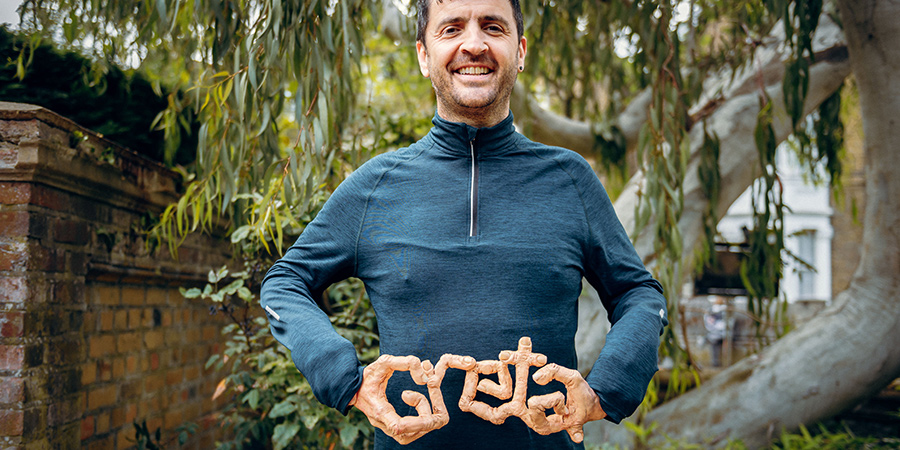
We had an incredibly tight schedule and a mountain of complex things to shoot. Even a simple conversation in the kitchen could feature multiple costume and make up changes. Martin, our 1st assistant director Flavinha Gomes and our director of photography Chris Fergusson and his team performed miracles on a daily and sometimes hourly basis to get us through the shoot, but we couldn't have done it without our cast who gave it everything they had and delivered gold in every take.
Spencer led by example - he's a proper genius. He's in every scene, playing so many characters, and as an exec producer on the show he's very involved in the production challenges and tough decisions. So he's got a million things going on in his head at any one time, but he always found time to make us laugh, even when the cameras weren't rolling, often right up to the moment the clapperboard comes down (pretending it had caught his tongue was a favourite!) - and then snap, he'd go straight into a take and deliver a perfect performance every time. In such a tight shoot, you really rely on actors who can stay focused and professional, but not lose sight of the fun.
Martin: We were super lucky that the cast and crew were absolute legends who could pull it out the bag under great pressure, and with little to no rehearsal! There was one scene early on where we had to shoot its entirety in the last 10 minutes of the day - which just seemed like an impossible task and we assumed there would be pick-ups. Felicity, Lucy and Spencer just threw themselves into it (including our brilliant DOP, Chris Fergusson) and we ended up with one of the funniest scenes in the whole series. That spontaneity and pressure really lends itself to the show which led to us affectionately calling the last moments of the day "The Clunkerdunk 10" where we often created our best stuff in the final 10 minutes. It's a horrible way to work but the results are undeniable.
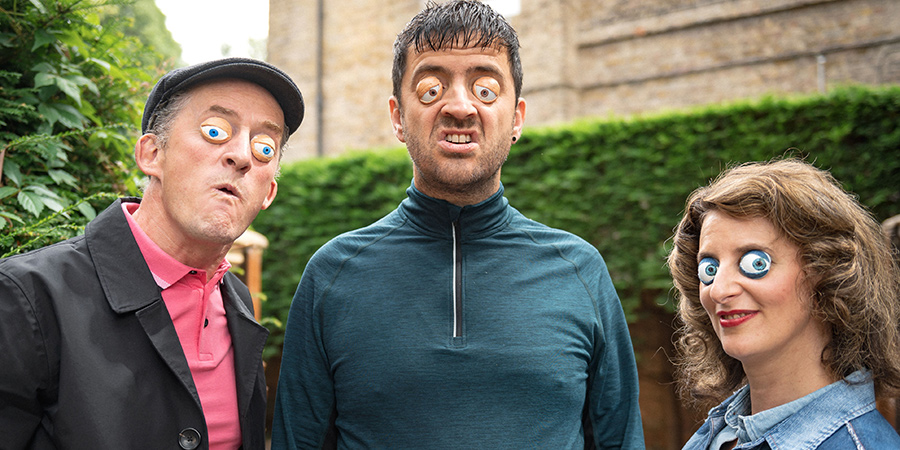
It's a show known for being very inventive, with music videos, puppets, weird props and visual effects. What were some of the challenges you faced bringing it all together?
Ben: It takes an army of talented people to bring Spencer's imagination to life. Not only is this an incredibly demanding show for costume, make-up and especially art department (Neil Barnes, our production designer, had the longest list I've ever seen), there's also Andy Jones who composes the music with Spencer and plays about a thousand instruments (including the broken car horn in ep 2!) and there are the puppeteers, Jonny Sabbagh and Will Harper, who design and make a lot of the bespoke, moveable props. For example, they designed the fish heads with tails that swim for Episode 4, and the monster costume for the Long Walk Home music video in Episode 5. Spencer is also a talented puppeteer, but it's often not possible for him to operate these things as he's in the scene, so Jonny and Will come to set and puppeteer their own creations. They're the ones making the shoes in the hallway sing and the door talk, among other things.
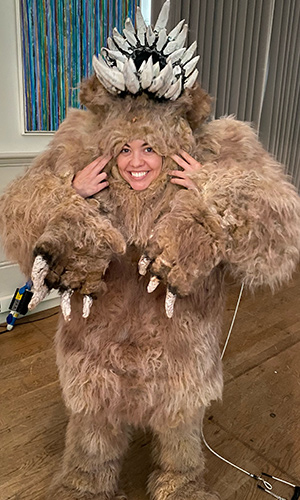
But they weren't available in the final week of the shoot, so we had to think creatively about the big furry monster that's stalking Jonny Wallop in the music video. We decided to make it into something an actor could wear and control, rather than something that would require Jonny and Will to be on set. Spencer's in the video as Herbert so he couldn't be the one in the suit - in the end I asked Sarah Twomey, who plays Lipstick Linda in the opening scene of every episode, if she'd be up for it as we needed someone who understood dance/movement to really sell the monster, and I'd once seen her in a play as a mermaid, which relied heavily on movement. She was brilliant but the monster is meant to be a big, scary thing so the suit completely swamped her and she was boiling - but she was a real trooper and absolutely smashed it.
Martin: Making this show is a bit like wading through mud - it's a constant challenge and there never seems to be enough time to do everything the way you want to. Ideas and jokes evolve at a serious pace so communication is so important - particularly because what one department is doing often feeds into or affects another.
We're often making incredibly bold and unusual decisions on an hourly basis and we have to feed those through the pipeline or else you'll end up on set wondering where the floppy thumb is coming from. There were times where we'd get to a scene on the shoot and we realise that for some reason what we'd prepped just isn't working, so we go back to the drawing board and start making props or something right there as we're rehearsing the scene.
We learnt to embrace when things didn't go to plan and adopted an unofficial motto "The obstacles are the path" - mainly to salvage what was left of our mental health. These limitations and challenges were always forcing us to be more creative and do things we would never have come up with if we'd had the luxury of time and money. It's a real test of endurance, trying to squeeze out every last drop of creativity all the way through production, right up to the last hour of the sound mix.
The ping pong ball eyes Jonny Wallop's famous for make a big return in Series 2. How do they work?
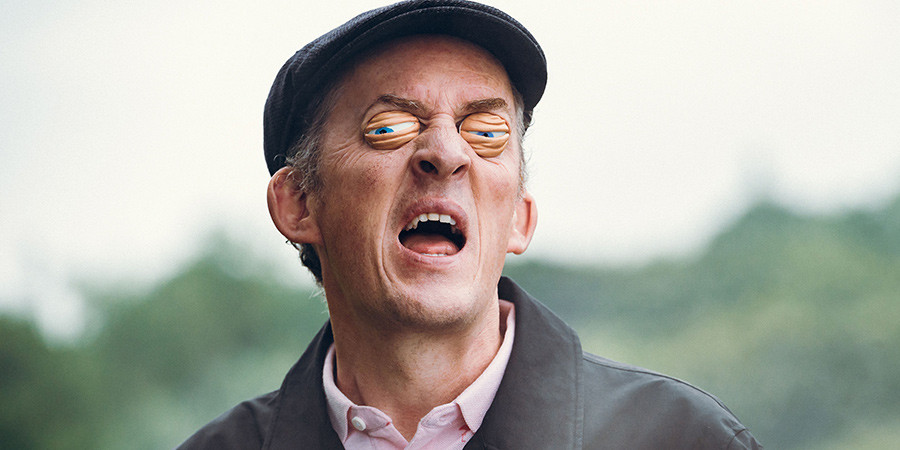
Ben: I was warned by David Simpson (the exec producer and original producer of Series 1) at the start of the process: don't underestimate the eyes. But nothing quite prepared me for how much work goes into that gag. Spencer has a very specific way he makes them - each pair is cut, sanded, painted, and made safe meticulously, then a very specific type of sticky tape is applied to the rims and 'de-tacked' to make it sticky enough to stay on an actor's face but not so sticky it'll hurt them. There's a different pair of eyes for every line for every actor in every scene that features Jonny Wallop - the art department had to make hundreds.

There's then a coding system added to each pair, and those codes are put into the script above every line of dialogue. Then Spencer and I spent several late nights where he'd lay them all out on the table, read out the line, try a pair in the mirror, turn around and deliver the line at me again. If it got a laugh from both of us, they were the pair for that line.
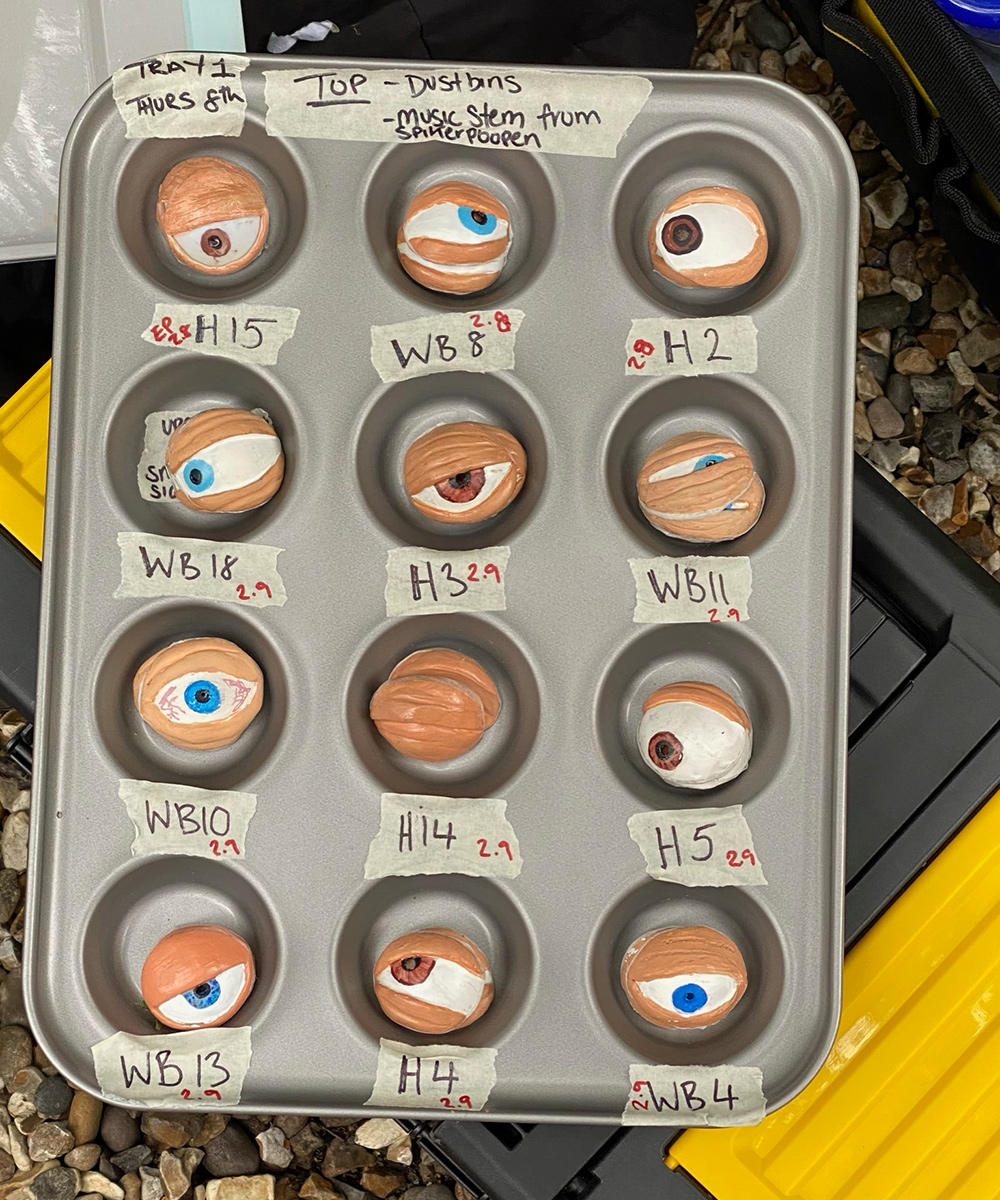
Martin: Shooting the eyes is a lot of fun but logistically a nightmare and can easily eat into a shoot day. It's a very disjointed process and tough for the actors because they can't see, it's a bit uncomfortable and there's no flow you get from shooting a normal dialogue scene. Spencer often has a very specific idea for the intonation of a line but we'll ask the actors to give us a few different options too before moving to the next set of eyes. Each scene might have 20 pairs of eyes, times the number of actors and before you know it the assistant director is looking at you like "why did you bring me into this hell?!"
On camera it's all about getting the pupils on the right eyeline and capturing the best delivery whilst trying to establish that flow by moving as quickly as possible. We found that having the eyes laid out in order on a baking tray just out of shot would allow the actor to grab the next pair quickly. Shove em in. Say the line. Next!
Ben: Yeah, because Spencer and I had really got to know the different pairs I somehow ended up being the 'eye wrangler'. Wandering around with a baking tray with pairs of eyes neatly set out like vol au vents. The world's weirdest waiter.
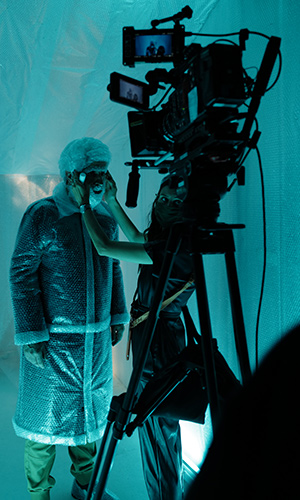
What do the scripts look like, how do you get your head around what's going to happen when you shoot?
Ben: Spencer often knows how he wants to do something - he's always tinkering around at home, so he'll have tried something out with a prop or costume, or a camera technique, or more often than not, a new way to manipulate his face! But he's extremely collaborative so sometimes it'll be something we all need to come up with a solution for. So for example, the bit in ep 4 where he sends a fishing line all around the world, it was very 'ok, how are we going to do this?'.
The other challenge with the scripts is, it's such a creative inventive show that nothing can be taken for granted. Not everything is meant to feel 'home-made' - sometimes it is, but sometimes it needs to feel slicker. And on top of that, anything could - and often does - happen in this show. So there are never stupid questions. Someone asked us at the production meeting: "It says in the script 'he puts the kettle on.' Is that a costume?'" Because it could be!
Despite how much planning had to go into it and how much craft Spencer puts into the writing, the scripts remained fluid right up until the last day of the edit. Spencer has this incredible imagination and vision but he's generous enough to share it with the rest of us, and he's super collaborative and willing to adapt or change things as we go along. If it makes it funnier, it goes in.
One of my favourite moments was coming up with the opening scene of ep 1. Spencer had written these jokes where Lipstick Linda, a commuter on a train who sits opposite Herbert at the start of every ep, is about to apply her lipstick as we go through a tunnel, and then something unexpected happens to her face when we emerge from the tunnel. All of the jokes in these scenes were working really well except one which we kept mulling over - then in rehearsals Sarah Twomey who plays LL suggested maybe she should eat the lipstick.
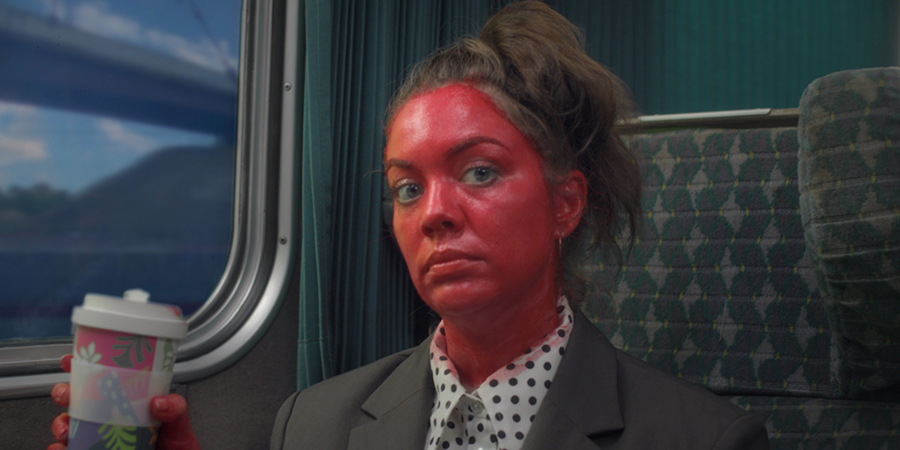
Spencer took the idea and ran with it, wrote it up, and then Anna Thompson - our hair and make-up designer, who's incredibly clever - came up with a way of achieving it in literally five minutes one evening. She hunted around her house for something edible she could sculpt, and sent us a video of her eating what looked like a totally real lipstick, the right shade of red to match the prop, with the added assurance 'don't worry it's vegan'! It was such a great example of the Clunkerdunk spirit - clever, inventive people all pitching in.
Martin: In many ways it's a sketch show disguised as a narrative (or is the other way around?) which means we're often creating props or sets that are used once and sometimes fleetingly. The amount of work that goes into something that is seen for a split second and never again is phenomenal. Breaking a script down becomes quite a complex task because so many gags rely on crossover elements and only work when all the parts come together - sometimes you might end up with 4 departments feeding into a singular joke. Apart from our puppet guys we had an entirely new crew this series so we spent a lot of prep trying to give people the best heads up of what to expect. Which is almost impossible because it will never make sense until you're in the thick of it.
Keeping track and managing it all is a mammoth task - Ben excelled in this area (and might be the reason he's aged about a decade during the production.) I like to mark up my scripts with different colours for specific departments or types of notes but before you know it the document looks like a 4 year-old has been at it with crayons after double dropping some Haribo. (Which, incidentally, is very on brand for Clunkerdunk).
Spencer's unique imagination means the scripts are very funny to read, and it's hard not to get excited about visualising how to execute it. We try to test and rehearse shots or ideas to discover if we need to go back to the drawing board - but that's a luxury we didn't often have and so a lot of things are a leap of faith. Quite often we're all on set looking at each after shooting something with a nod that says "Well, I've never seen that before - and probably never will again!" That's one of the many joys of Clunkerdunk.
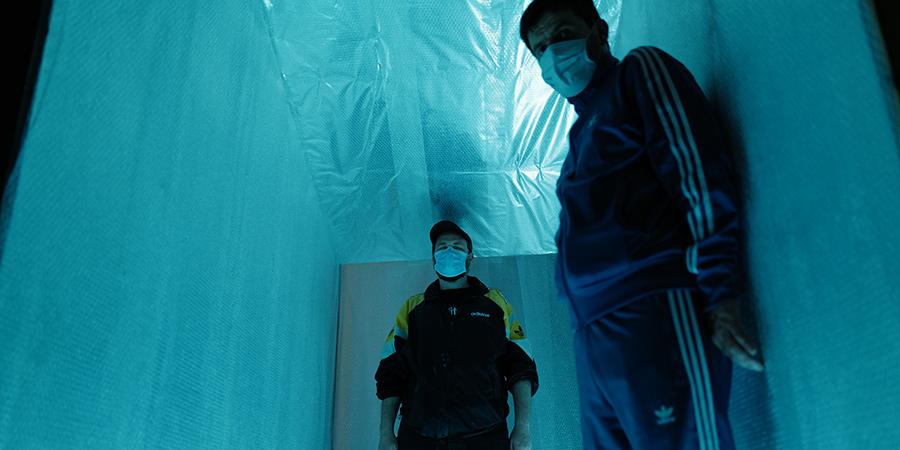
What's the post production process like?
Ben: About as nail-biting as the shoot! It's only 5 x 15 mins but they're so dense - and there were a tonne of music video to edit as well - so we were constantly up against it. Martin did all the graphics, and Spencer did a lot of the background and designs for the Long Walk Home music video in ep 5, whilst sat in the editing room. And Martin was racing home every night to construct a stop-motion sequence where a load of stationery on Herbert's desk has an orgy. But it was a great process, we had very good people working with us.
Our editor, Jason Boxall, was brilliant at not only finding the comedy but also constructing the music videos, and always had really good suggestions. And he was very good at putting up with our nonsense.
Martin: Normally when you get to post [production] it's a moment where you can take a breath and relax whilst you play with the material - a Clunkerdunk edit feels like being on any normal shoot. It's intense, demanding and a race against the clock. We're working with incredibly dense material full of technical executions and tricky elements which need to be layered, pieced together and timed to music. It's a hard show to edit under normal conditions but with us creating new elements and shooting stop motion it becomes all consuming. I had a weird moment where I was doing some stop-motion animation at 3am, and as I looked down to see what I was working on (a stapler rimming another stapler) I seriously had to consider my life choices.
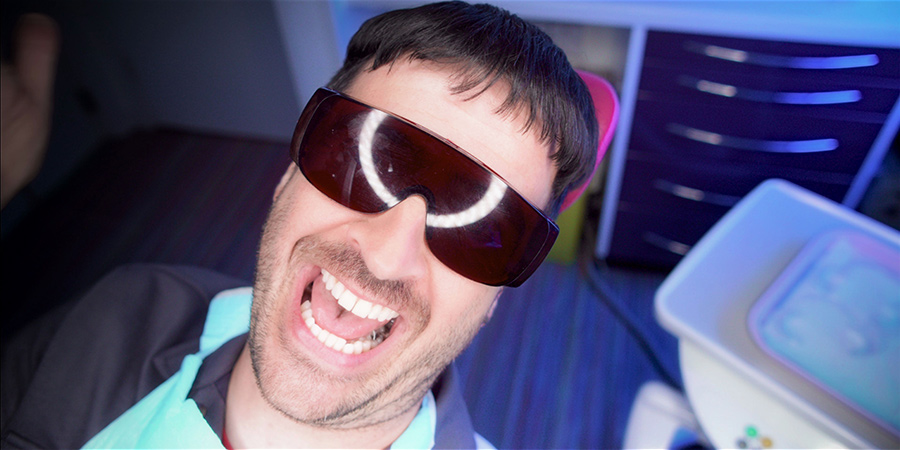
Although we're still guns blazing during post we have a lot of fun and one of the best things is getting fresh collaborators who are bringing new ideas to the table. Beth Sayer, our online editor was going to extra lengths to finesse jokes and really make them zing. Gavin Allingham, our sound designer/mixer kept pushing the boat out and was always finding new places for extra laughs right up to the last minute of production. And that was how it was through every stage of the process, people burning the candle at both ends until one of the grown-ups says "ok it's time to move on". That dedication, grafting and crafting, signifies the Clunkerdunk spirit - we're all just one big family of weirdoes trying to make people smile or laugh.
It must have been a lot of fun to make.
Ben: It was a loads of fun, but it was a lot of hard work from a lot of people, most of all Spencer and Martin. There's no other show quite like it which makes it on the one hand an absolute privilege to be involved with, and on the other the silliest white-knuckle ride I've ever been on. And I still have nightmares about baking trays full of eyeballs.
Martin: It was. Can I go home now?
The Mind Of Herbert Clunkerdunk is on BBC Two on Wednesdays at 10pm, with the whole series available on BBC iPlayer after the first episode has been broadcast.
This article is provided for free as part of BCG Pro.
Subscribe now for exclusive features, insight, learning materials, opportunities and other tools for the British comedy industry.

